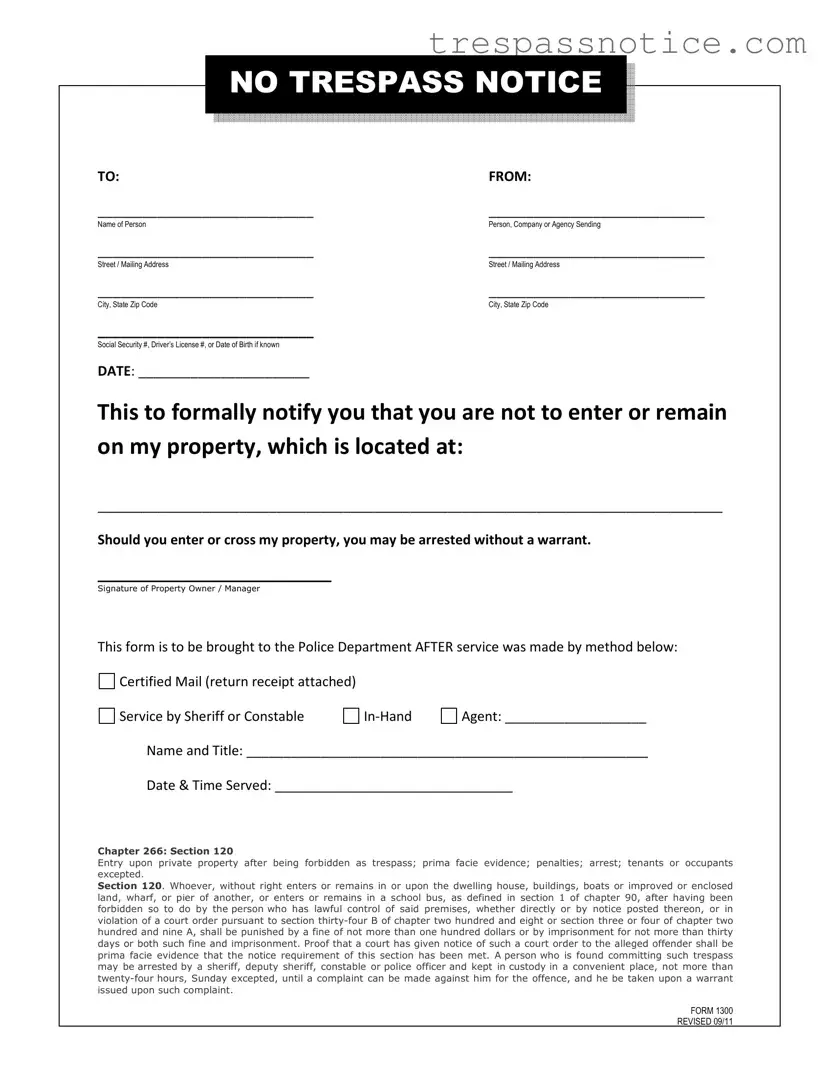Official No Trespassing Letter Template
A No Trespassing Letter is a formal document that informs individuals that they are not allowed to enter or remain on a specific property. This letter serves as a clear warning and outlines the consequences of trespassing, which may include arrest without a warrant. Properly delivering this notice ensures that the property owner's rights are protected and provides a record of the communication.
Open This Document Online

